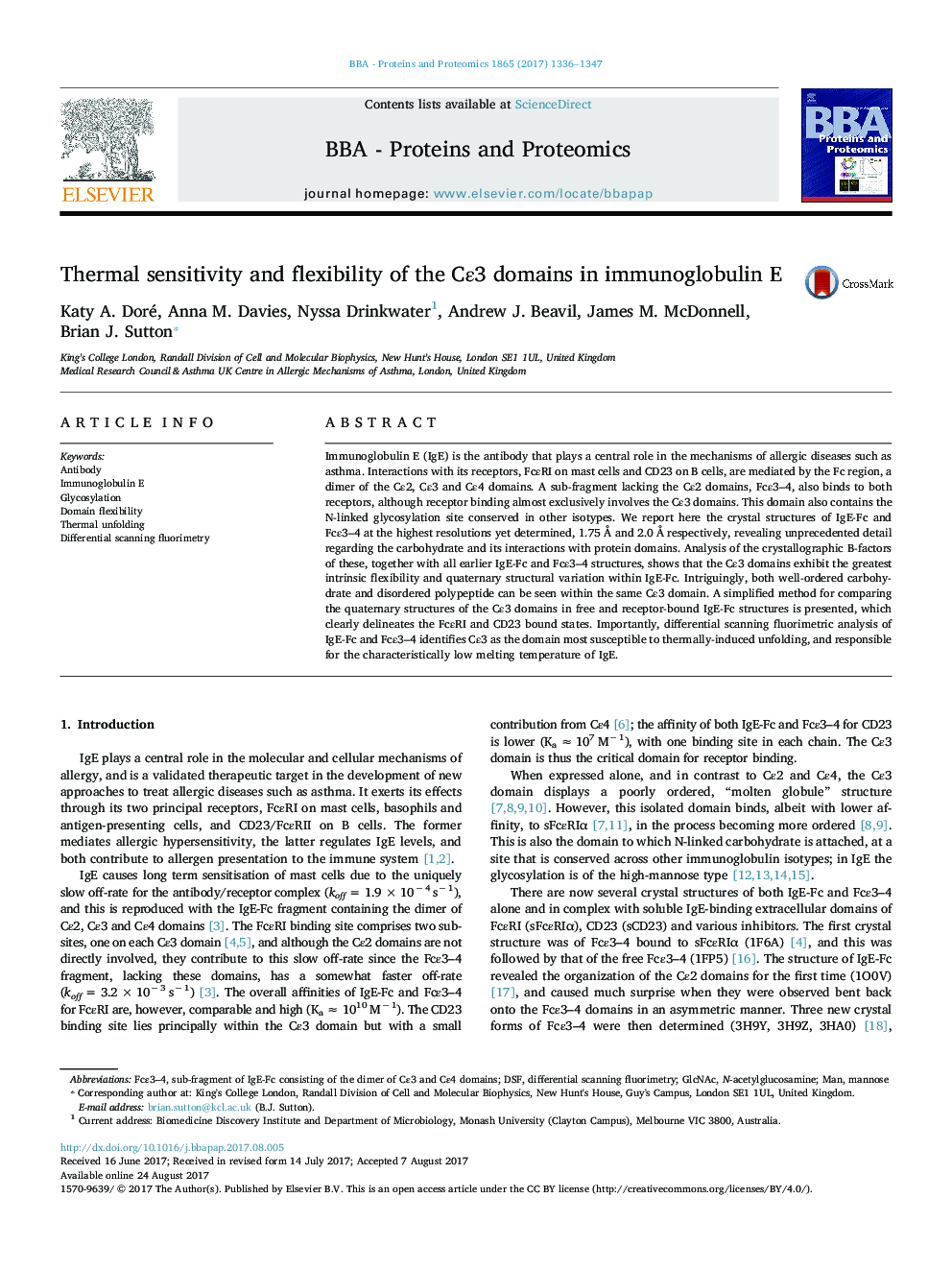| Article ID | Journal | Published Year | Pages | File Type |
|---|---|---|---|---|
| 5131866 | Biochimica et Biophysica Acta (BBA) - Proteins and Proteomics | 2017 | 12 Pages |
â¢The Cε3 domains of IgE are most susceptible to thermally induced unfolding determined by differential scanning fluorimetry.â¢The Cε3 domains are responsible for the characteristically low melting temperature of IgE.â¢The Cε3 domains exhibit the greatest intrinsic flexibility.â¢Quaternary structural diversity of Cε3 domains is compared across all known structures using a simplified single parameter.â¢Human IgE-Fc and Fcε3-4 domain structures are determined at the highest resolutions yet reported (1.75 à and 2.0 à ).
Immunoglobulin E (IgE) is the antibody that plays a central role in the mechanisms of allergic diseases such as asthma. Interactions with its receptors, FcεRI on mast cells and CD23 on B cells, are mediated by the Fc region, a dimer of the Cε2, Cε3 and Cε4 domains. A sub-fragment lacking the Cε2 domains, Fcε3-4, also binds to both receptors, although receptor binding almost exclusively involves the Cε3 domains. This domain also contains the N-linked glycosylation site conserved in other isotypes. We report here the crystal structures of IgE-Fc and Fcε3-4 at the highest resolutions yet determined, 1.75 à and 2.0 à respectively, revealing unprecedented detail regarding the carbohydrate and its interactions with protein domains. Analysis of the crystallographic B-factors of these, together with all earlier IgE-Fc and Fcε3-4 structures, shows that the Cε3 domains exhibit the greatest intrinsic flexibility and quaternary structural variation within IgE-Fc. Intriguingly, both well-ordered carbohydrate and disordered polypeptide can be seen within the same Cε3 domain. A simplified method for comparing the quaternary structures of the Cε3 domains in free and receptor-bound IgE-Fc structures is presented, which clearly delineates the FcεRI and CD23 bound states. Importantly, differential scanning fluorimetric analysis of IgE-Fc and Fcε3-4 identifies Cε3 as the domain most susceptible to thermally-induced unfolding, and responsible for the characteristically low melting temperature of IgE.
